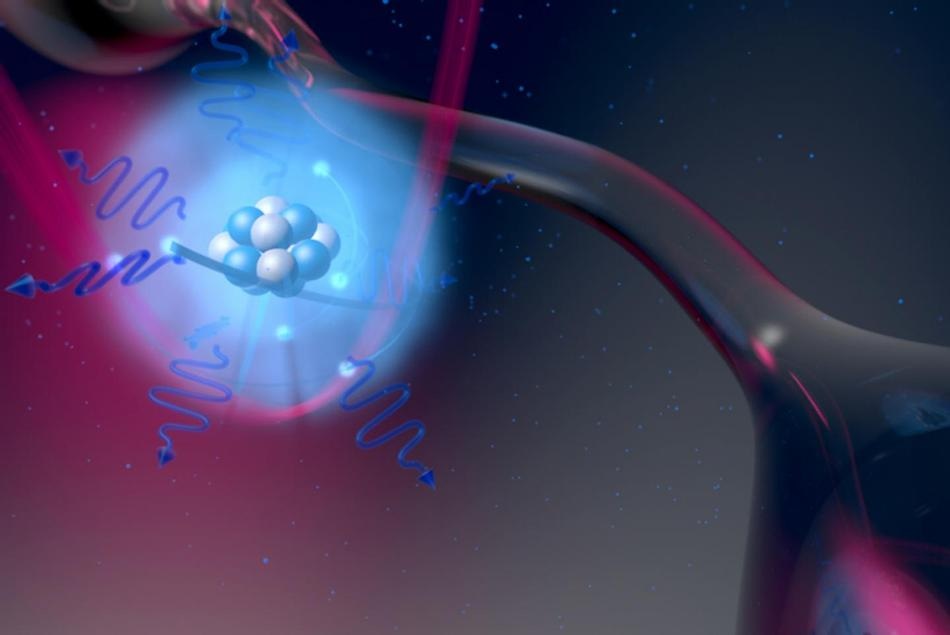Nov 20 2019
Quantum properties can be studied and rendered applicable for technological applications through the control of individual atoms. For nearly a decade, physicists have been performing research on a technique with the potential to capture and control atoms—the so-called nanooptical traps.
 Laser light can be used to capture individual atoms along a very thin glass fiber. Image Credit: Mathieu L. Juan.
Laser light can be used to capture individual atoms along a very thin glass fiber. Image Credit: Mathieu L. Juan.
The technology of trapping microscopic objects using known light from optical tweezers is applied to optical waveguides, an exclusive glass fiber in this case. The thickness of the glass fiber may only be a few hundred nanometers—nearly 100 times thinner when compared to a strand of human hair.
When laser light of various frequencies is directed into the glass fiber, a light field is formed around the waveguide that can incorporate individual atoms. However, to date, the usability of this technique has been restricted by the fact that the atoms turn extremely hot after a very short time and are lost.
When compared to using optical tweezers, the heating rate was found to be greater by three orders of magnitude, where the light field is produced in free space. In spite of a thorough search, previously, it had not been feasible to ascertain the reason.
At present, Daniel Hümmer and Oriol Romero-Isart from the Institute of Quantum Optics and Quantum Information of the Austrian Academy of Sciences and the Department of Theoretical Physics at the University of Innsbruck, in collaboration with Philipp Schneeweiss and Arno Rauschenbeutel from the Humboldt University of Berlin, have thoroughly investigated the system.
They have used their theoretical model to demonstrate that a specific form of mechanical vibration of the glass fiber causes the powerful heating of the particles. The study findings have been described by the physicists in the Physical Review X journal.
Mechanical Vibrations
These are the vibrations that arise when you let waves travel along a rope. The particles, which float only about 200 nanometers above the surface of the waveguide, heat up very quickly because of these vibrations.
Daniel Hümmer, Department of Theoretical Physics, University of Innsbruck
The heating rate that has currently been theoretically established is in good agreement with the experimental results. This outcome has significant implications for various applications: Firstly, it is possible to considerably enhance the technology with simple counter-measures. Then, longer coherence times would enable more complex applications and experiments.
Secondly, the physicists assume that the study outcomes could also be applicable to various similar nanophotonic traps. The theoretical model recently reported by them offers crucial guidelines for designing such atomic traps.
When manufacturing these traps, not only the optical properties must be taken into account, but also the mechanical properties. Our calculations here give important indications as to which mechanical effects are most relevant.
Oriol Romero-Isart, Department of Theoretical Physics, University of Innsbruck
The strength of the interaction between photons and individual atoms in nanooptical traps is specifically high—a challenge that hampers various other concepts. Therefore, this technology paves the way for a new area of physics. In the recent past, several theoretical considerations have already been made. At present, the physicists from Germany and Austria have overcome a significant barrier on their way to innovation.
The study was funded by the European Research Council (ERC), the Austrian Academy of Sciences, and the Austrian Federal Ministry of Education, Science and Research.